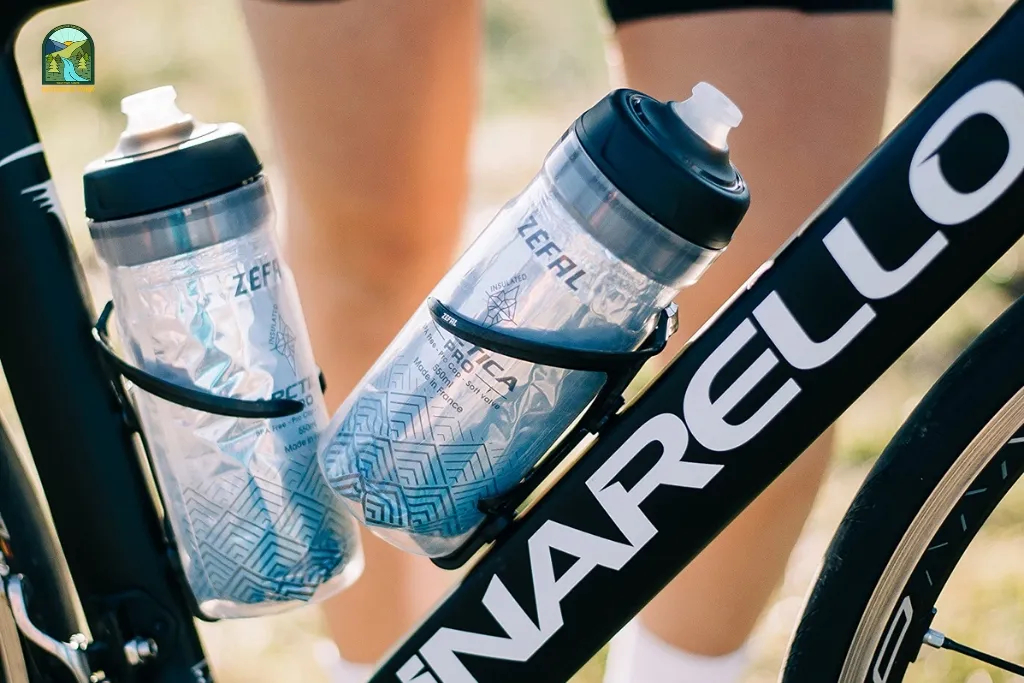Hey there, cycling enthusiasts! ?♂️?♀️ Whether you’re a seasoned road warrior or just starting out on your pedal-powered adventures, one thing’s for sure: staying hydrated is key to a successful and enjoyable ride. That’s where the right water bottle comes in.
But with so many options out there, how do you choose the perfect one for your biking needs? Look no further! In this article, we’ll explore the best water bottles for biking. From lightweight and durable options to those with convenient features for on-the-go hydration, we’ve got you covered. So, let’s saddle up and find the water bottle that’ll keep you fueled and refreshed on every ride with me and nationalparkshops.com!
CamelBak Podium Dirt Series Chill
- Capacity: 620 Milliliters
- Special Feature: Leak Proof, Double Wall, Insulated
- Product Dimensions: 2.87″W x 9.45″H
- Recommended Uses For Product: Cycling, Mountain Biking
- Material: Plastic
The insulation in the CamelBak Podium Dirt Series Chill effectively maintains the temperature of your beverage, keeping it cool or warm for up to an hour. A twist lock on the nozzle prevents accidental squashing, which could lead to leaks in your bag or car during transport.
The nozzle cap is beneficial for rides in muddy conditions and doesn’t interfere with use as long as it’s taken off or put back on while the bottle is in its holder. Not all cages hold it securely due to a shallow indentation that is positioned a bit too high. However, we never lost the bottle during our rides.
We appreciate the bite valve, the flow rate, its squeezability, and the reasonable 620ml capacity. Considering its features, these are the water bottles for biking that offer good value for money.
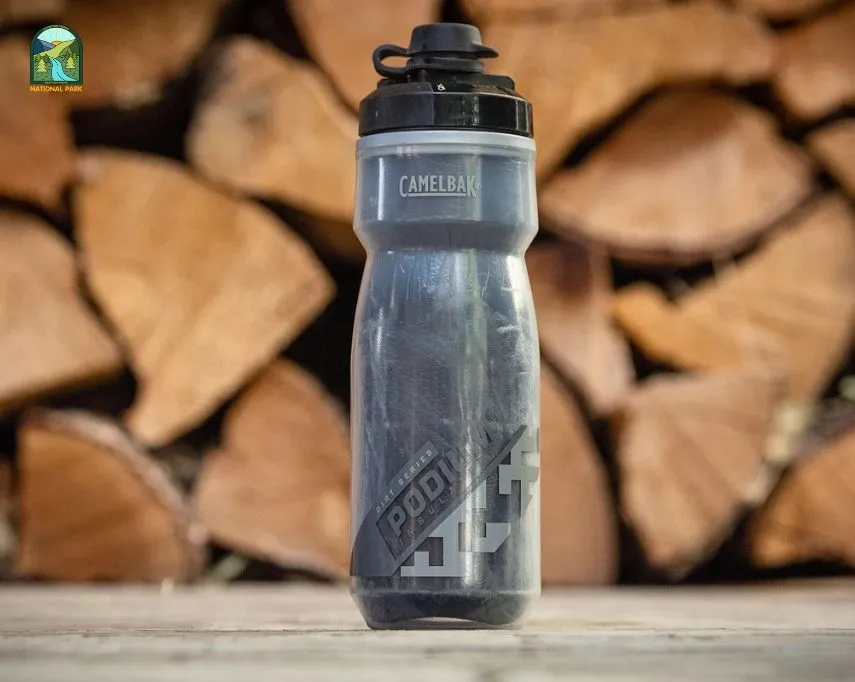
Polar Bottle Sport Insulated Water Bottle
- Capacity: 1.3 Pounds
- Special Feature: Insulated
- Product Dimensions: 2.75″W x 9″H
- Recommended Uses For Product: Cycling, Gym
- Material: Plastic
The key advantage of the Polar Bottle Sport lies in its insulation, which means it should, in theory, keep your water cooler compared to a regular, non-insulated bottle. Another feature I really appreciated is its size. Initially, I thought these water bottles for biking would be far too big to fit in my water bottle holder (I even mentioned this to my wife), but it actually fit!
Although Polar advertises that this bottle is better insulated due to its triple-layer design (two plastic layers and one aluminum), I didn’t notice my water staying colder than it does in my non-insulated bottles. For comparison, I’ve used Camelbak Podium Chill insulated bottles for years, and they seem to perform slightly better than the Polar Bottle in terms of keeping water cold. Of course, this is just my personal observation. Still, I thought it was worth sharing.
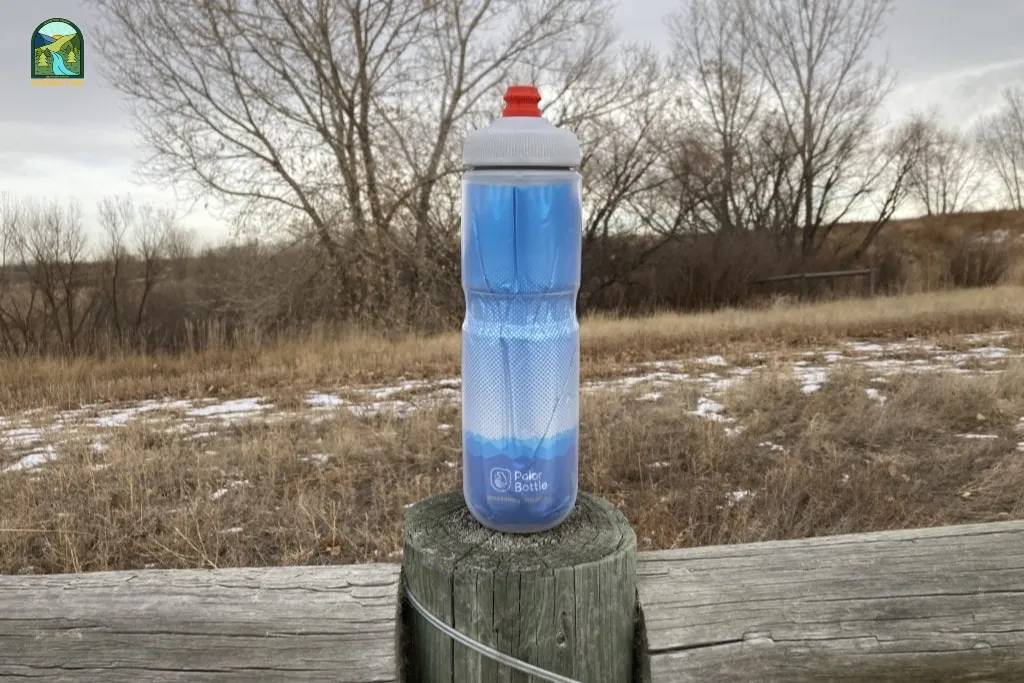
Elite Jet 550ml Bottle – Biodegradable Water Bottles for Biking
- Capacity: 550 Milliliters
- Special Feature: Squeeze Operated, Biodegradable
- Product Dimensions: 2.83″W x 7.87″H
- Recommended Uses For Product: Cycling
- Material: Plastic
The Elite Jet is a favorite among several members of my team. This is primarily because controlling the fluid flow rate with this bottle is one of the easiest experiences we’ve had during testing. Its biodegradable nature also earned us high marks. According to Elite, it can decompose in a compost environment within five years, compared to several hundred years for a typical plastic bottle.
The Elite Jet water bottles for biking come in four different sizes, and during testing, we found that the 19oz/550ml size is ideal for a standard bike frame with two bottle cages. The larger sizes are perfect for longer, hot rides where refilling options are scarce, but if you have a smaller bike frame, you might find it difficult to fit. Overall, it’s a reliable cycling water bottle with strong eco-friendly credentials.
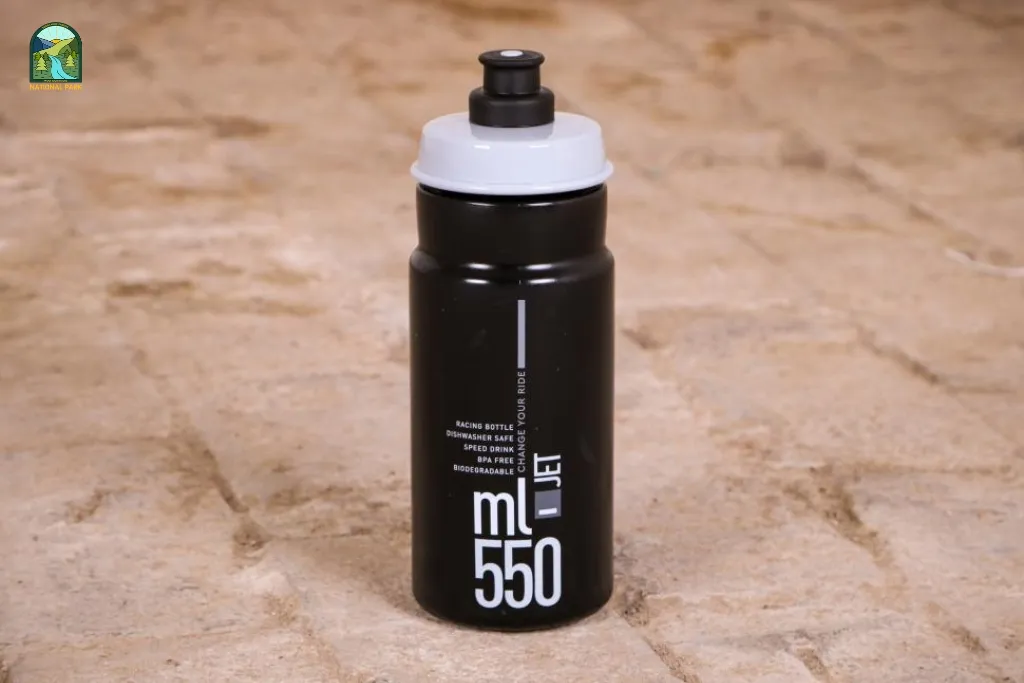
>> Read More: How Many Oz in a Water Bottle? The Essential Guide for Travelers
Zéfal Arctica Pro 75 Insulated Water Bottle
- Capacity: 550 Milliliters
- Special Feature: Insulated
- Product Dimensions: 11″W x 11″H
- Product Care Instructions: Hand Wash Only
- Material: Polypropylene
The Zéfal Artica Pro 75 makes it the largest bottle in this test, while also being the second most affordable. These water bottles for biking insulation were effective in keeping liquids cool for over three hours during a warm afternoon ride, reinforcing the idea that it’s a great option for summer gravel riding or adventurous bike packing trips where refilling opportunities are limited.
You need to apply a firm squeeze to get the cap to release a satisfying amount of fluid. However, the Artica Pro 75’s size, smooth surface, and neck indentation make it a bit challenging to grip securely while riding.
>> Read More: 9 Best Travel Filtered Water Bottles for Every Budget (Tested)

CamelBak Podium Bike Water Bottle
- Capacity: 0.62 Liters
- Special Feature: Squeeze Bottle
- Product Dimensions: 8.23″W x 2.91″H
- Recommended Uses For Product: Cycling, Mountain Biking
- Material: Plastic
As I mentioned earlier, I’ve been using Camelbak Chill insulated bottles for years. I also tried the regular Camelbak Podium, which isn’t insulated. This gives it a slimmer profile compared to the Camelbak Chill, but it doesn’t keep water as cold. Other than that, the two are quite similar.
One thing I’ve noticed with all versions of Camelbak water bottles for biking is that they can be a bit difficult to open and close. It takes some effort (though I always close it to avoid spilling water when I’m not on the bike!). The nozzle design is excellent and works similarly to the Polar in preventing water from leaking even when the bottle is open. However, because of the more intricate cap and nozzle design, it can be slightly harder to clean than other models. Overall, the Podium bottles are stylish, well-made, and come in attractive colors.
>> Read More: Square Water Bottle

Polar Bottle Breakaway Wave Lightweight
- Capacity: 20 Fluid Ounces
- Special Feature: Lightweight, Leak Proof
- Product Dimensions: 2.75″W x 8.25″H
- Recommended Uses For Product: Cycling
- Material: LDPE, TPU Valve
The Polar Bottle Breakaway Wave is designed specifically for biking enthusiasts, featuring a lightweight and durable construction that makes it easy to carry on long rides. This bottle is made from low-density polyethylene, which is BPA-free, ensuring that your water stays safe and free from harmful chemicals. With a capacity of 24 ounces, it strikes a balance between providing enough hydration without being too bulky.
One of the standout features of the Polar Bottle is its Tri-Layer insulation. This technology effectively keeps your drinks cold for extended periods, which is especially beneficial during hot summer rides. In my experience, when I filled the Polar Bottle with cold water and left it in direct sunlight for an hour, it remained significantly cooler than many other bottles I tested. After three hours, the water was still pleasantly chilled, making these water bottles for biking an excellent choice for long biking sessions.
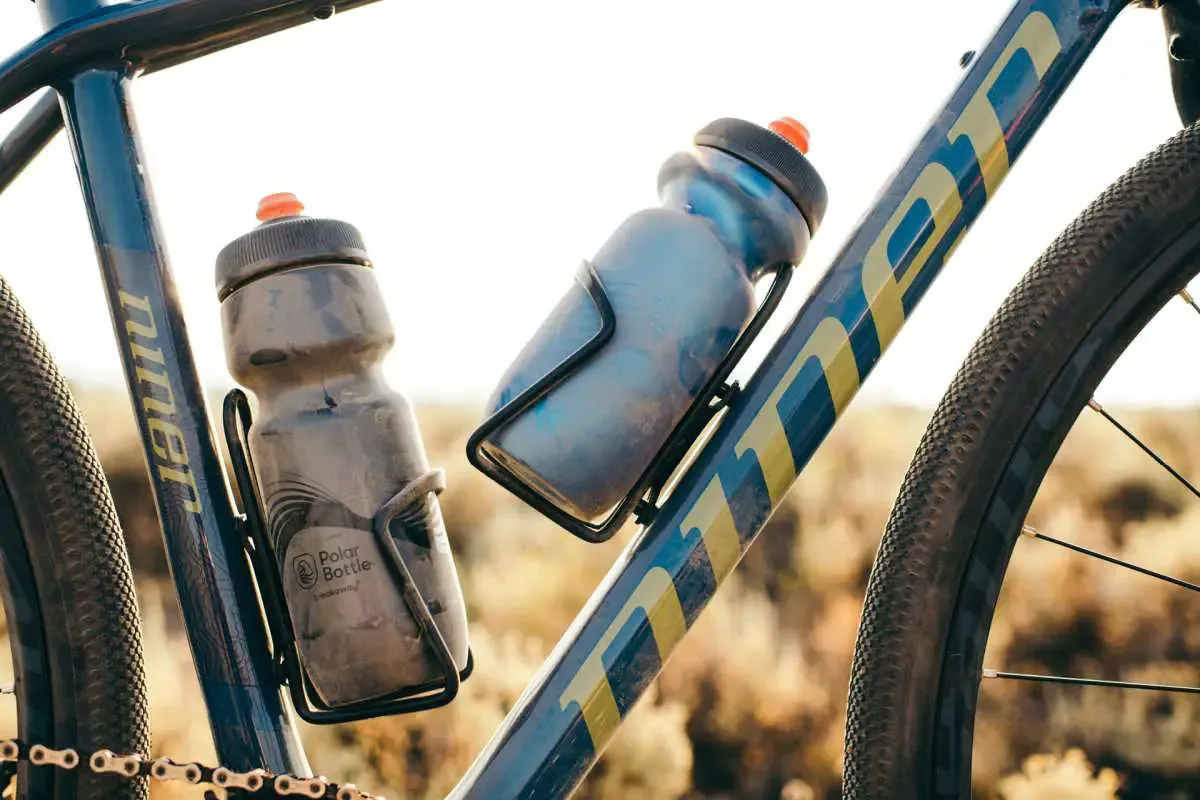
SIGG – Aluminum Sports Water Bottle
- Capacity: 1.6 Pounds
- Special Feature: Lightweight, Leakproof, Made in Switzerland, BPA-free, Also for Carbonated Drinks, Fits most Bike Cages, Wide Mouth, Easy to Clean
- Product Dimensions: 2.8″W x 10.8″H
- Recommended Uses For Product: Cycling, Camping, Hiking, Sports
- Material: Aluminum
The SIGG aluminum water bottle is designed for active individuals who need a lightweight and durable option for hydration. Made in Switzerland, these water bottles for biking have a classic design that combines functionality with aesthetics. The bottle is crafted from a single piece of premium aluminum, making it one of the lightest portable water bottles available.
In terms of performance, the SIGG excels in everyday use. It is not insulated, so it may not retain temperature as well as some stainless steel bottles, but it does a great job of keeping drinks at a reasonable temperature for a few hours. However, it is best suited for water or non-carbonated drinks, as hot liquids can make the exterior too hot to handle.

How to choose water bottles for biking?
Water bottle designs and features can vary, but when choosing the best water bottles for biking, here are some important factors to keep in mind (These are also the criteria that my team chose to select the 7 water bottles above):
- Shape: It should fit securely in the bike’s bottle cage without rattling. Look for bottles where the indent isn’t placed too high. A practical water bottle should hold at least 500ml.
- Squeezability: You’ll want a bottle flexible enough to provide a good drink with a squeeze, which also enhances the flow rate at the valve.
- Flow rate: This works in conjunction with the bottle’s squeeze to allow easy drinking, even while riding.
- Nozzle: Does it lock? A nozzle with a tight seal helps prevent leaks on any terrain. Sports caps give you hands-free control over opening and closing the bottle. If you’re mountain biking, a nozzle cap is useful for keeping it clean from mud and splatters.
- Neck width: The wider, the better. This gives more space for adding energy powders, makes it easier to fill from taps or fountains, and simplifies cleaning.
- Grip: A textured surface on the bottle will make it easier to hold, especially with sweaty or wet hands while riding.
- Insulation: Insulated bottles keep your drink colder for longer, and in freezing conditions, they can help prevent the liquid from freezing.
- Guarantee: Check if the bottle comes with a guarantee, and if so, how long it covers.
>> Read More: How Many Water Bottles Is a Gallon?
What are other ways to stay hydrated while cycling?
Whether you’re cycling in a sportive or under hot conditions, staying well-hydrated is essential.
However, a water bottle isn’t always the most practical solution for keeping hydrated while on the bike. For mountain bikers or gravel riders, the frame might not have enough space for a water bottle due to suspension components or frame bags. In such cases, opting for a Camelbak or similar hydration bladder carried in a hydration or hip pack may be a more suitable option.
>> Read More: The 8 Best Hydration Bladders 1L-2L-3L, Tested and Reviewed
FAQs
Does the size of water bottles for biking really matter?
It can be a bit frustrating that there isn’t a standard water bottle size, as this would simplify mixing your energy or hydration drinks. So, it’s important to adjust the dosage accordingly. The most common size water bottles for biking is around 20oz/550ml. Even bikes with smaller frames should be able to fit two bottles of this size simultaneously.
While it might be tempting to choose the largest bottle, keep in mind that unless your frame is large or has low bottle cage mounts, you may find it difficult to fit, remove, or safely drink from a larger bottle while on the move.
One option is to mix and match, placing a larger bottle in the seat tube cage and a smaller one in the downtube cage. This setup works well for most bikes, giving you the option to refill the smaller bottle from the larger one.
What are the healthiest water bottles for biking?
Like any water bottle, specific water bottles for biking need to be cleaned thoroughly after each use. Almost all reusable bottles today are made from BPA-free plastic and use food-grade materials. Some are designed with systems to minimize odors and prevent mold buildup, often in the form of a special coating that is also food-safe.
While it’s tempting to pick a water bottle that matches your bike or kit, darker and opaque bottles can make it harder to see if all residue has been removed or if mold has started to grow. If you’re short on time or aren’t confident in your cleaning skills, opting for a transparent bottle can make it easier to check both cleanliness and liquid levels at a glance.
The most important part to focus on is the lid and nozzle. Many can be taken apart (refer to the manufacturer’s instructions), but more complex drinking mechanisms can be harder to clean thoroughly. Ideally, soak everything overnight in a sterilizing solution or, if it’s dishwasher-safe, run it through a hot wash to sanitize.
Are insulated cycling water bottles worth it?
On cold rides, your drink can quickly turn into a slushy or even freeze completely, as the wind chill significantly lowers the cycling temperature. On hot days in the saddle, when all you want is a refreshing drink, gulping down warm liquid can leave you feeling even thirstier.
Although an insulated bottle won’t keep your drink hot or cold for hours on end, the best insulated water bottles for biking will help maintain the original temperature for a longer period. This can make your drink more enjoyable, encouraging hydration even on the chilliest rides and helping reduce the risk of cramping while cycling.
Conclusion
Finding the perfect water bottles for biking isn’t just about quenching your thirst, it’s about optimizing your ride. From sleek designs that fit snugly in your cage to insulated wonders that keep your refreshment icy cold even on the hottest climbs, the right water bottle for biking can be a game-changer. Now that you’re armed with the knowledge, go forth and conquer those trails (and your thirst) with the perfect hydration companion by your side!
Read More:

